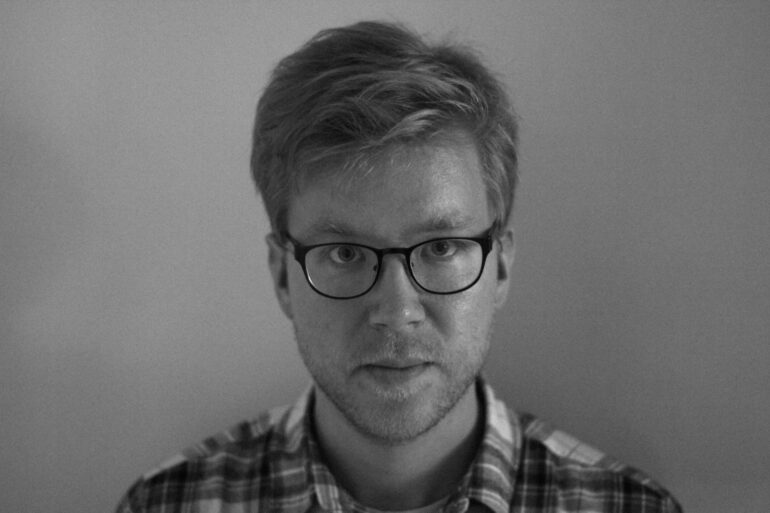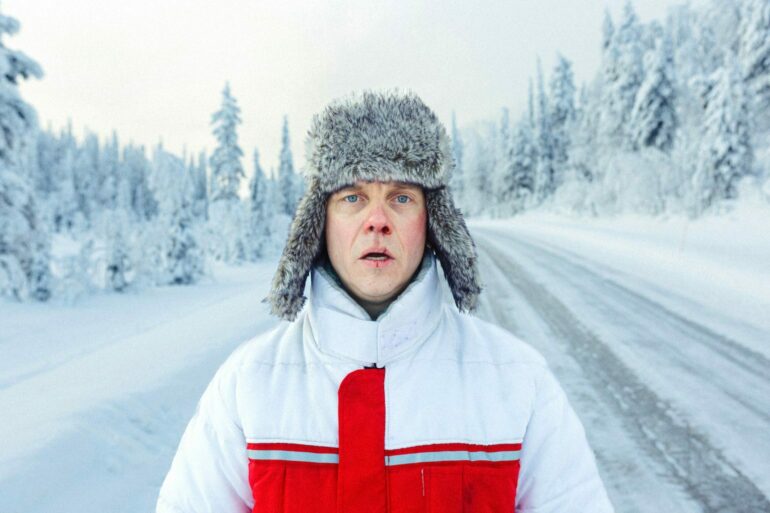WRITTEN BY: Annika Pham
The writer of The Happiest Day in the Life of Olli Mäki tells us about his directorial debut, world premiering Thursday May 19 at the Critics’ Week in Cannes.
An established poet and emerging filmmaker, Myllylahti has been on the list of Finnish talents to watch for half a decade.
In 2016 he made his mark as scriptwriter of Juho Kuosmanen’s Un Certain Regard winning film The Happiest Day in the Life of Olli Mäki. His short film The Tiger played at the 2018 Critics’ Week and the following year the script for The Woodcutter Story picked up the Cannes sidebar’s Next Step Award.
The story set in a small snowy town in northern Finland follows the kind and optimistic woodcutter Pepe. Although a chain of dramatic events gradually put into havoc his own and his son’s lives, the little man with a big heart continues to see life on the bright side, meeting along the way a gallery of oddballs, including a child barber, a psychic singer and a miner, reflecting on existence.
The ensemble cast includes Jarkko Lahti, Hannu-Pekka Björkman, the young Iivo Tuuri and Katja Küttner. Aamu Film Company is producing, with co-production partners Keplerfilm from The Netherlands, Beofilm from Denmark, and Achtung Panda! from Germany. Totem Films handles sales. The Finnish release via B-Plan is set for October 7.
How is it to be at the Critics Week with this film?
Mikko Myllylahti: I do have a history with the Critics’ Week, but this is super special with my first feature length and all my team in Cannes. I first had the idea for the film after Olli Mäki. It took time to finalise the script and to get the funding for the film.
The story is full of twists and turns and metaphorical, although we follow the same main character in his misfortunes and search for a meaning in life. Can you explain how you’ve weaved together this story, dipping into your rich craft as a poet and applying it to the film?
MM: Yes my background is poetry. I had a clear starting point, but then developing the full script was challenging. The idea started when I hired a woodcutter to cut a tree in my garden. I looked through the yellow pages and I found this original man, from a small town in northern Finland, not far from my home town [Tornio]. He had had a rough ride in life, but was amazingly positive. I was touched by him. Somehow, in a world full of chaos and uncertainties, this man embodied hope for me. If I had written a collection of poetry, this would have been the topic: search for the possibility of hope, without any religious connotation.
It is interesting that you’re saying this as I felt there were a few religious references, allegories of heaven, hell, and purgatory….
MM: I am interested in religion but don’t have a religious belief. I have studied philosophy and am interested in existentialism. In the end, the film questions if there is a meaning in life-who are we and where are we going? I use comedy to discuss those important questions.
There is little dialogue and you use conventional wide-screen cinema and stylised tableaux with a striking colour scheme. Can you tell us about your visual choices?
MM: I had a great cinematographer, Arsen Sarkisiants. We went to film school together. We discussed a lot about film classics and decided to shoot on 35mm, framing the actors in cinemascope with short and long shots. The text is very literate so visually I had to use a similar playful way.
I can see some Roy Andersson, Aki Kaurismäki, Takeshi Kitano influences…
MM: I was also inspired by Robert Bresson’s body of work. I like his attempt to reach for the transcendent, his approach to existentialism, with human beings searching for a way out. I also love Takeshi Kitano’s work, in particular his acting method.
Also in your film, violence is somehow neutralised by the absence of emotion shown by the protagonists…
MM: As a director, you search for the truth, and I feel I can reach pure and true emotions, even via laconic characters. It’s about the language of cinema, not about the actors’ feelings, but the audience’s own feelings. This is again present in Bresson films. I feel that if I had stayed in the psychological realism, that would have diminished my story-Stepping out of psychological realism allowed me to elevate the story from the local to the universal.
The music in the film perfectly matches the narrative tone..
MM: I was lucky to have an excellent crew which was crucial for my first feature film. The composer Jonas Struck is Danish. I fell in love with his sketches. He read the script way before we started shooting and was inspired by it. He sent me one folder full of music pieces and some of them stayed with the final film. He searched for unusual instruments and sounds.
Are you fundamentally optimistic, like your character Pepe and your real woodcutter?
MM: Yes I am. I tend to look at the bright side in everything. There is a lot of uncertainty and worrying things for us in the future. We need hope and hopeful stories.
What’s next? Writing and directing or just writing?
MM: I enjoyed writing a script for Juho Kuosmanen who is a good friend of mine, but I love directing as well. I have various projects -a book adaptation and a horror pic. I want to dig into our folklore. So much is yet unexplored.

